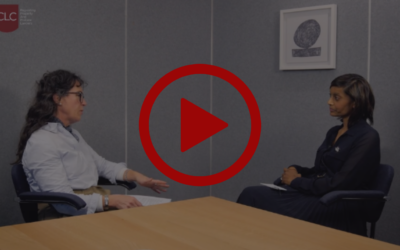HM Land Registry Practice Guides – An in-depth look into practice guide 6 covering Devolution on the Death of a Registered Proprietor
Maria Hardy of Property Conveyancing Consultancy (PCC) briefly explains the benefits of why a thorough understanding of HM Land Registry practice guides can benefit any conveyancer, and then provides an in-depth look into practice guide 17.
HM Land Registry Practice Guides:
HM Land Registry has presently produced 82 practice guides covering most areas of the conveyancing process. In my opinion the practice guides should provide a backbone to any training given to an aspiring or experienced conveyancer, they can be used to show you how to draft the correct execution clause, or how to draft a lease or transfer and much more. The practice guides are there to assist in how to get an application right the first time and how to produce consistency throughout our work. The Land Registrar themselves refer to the practice guides, especially when dealing with complex applications so it just makes sense, that we as property professionals, should familiarise ourselves with the practice guides and follow their direction when dealing with our transactions. This will ultimately reduce requisitions and enable our applications to be registered in a seamless manner.
Practice Guide 6
Practice guide 6 covers devolution on the death of a registered proprietor. The guide focuses on registered titles only and sets out what evidence is needed for applications based on the death of a registered proprietor. The contents of the guide will now be condensed and explained.
Death of a proprietor
After the death of a sole, or sole surviving proprietor the personal representative of the deceased can apply to become registered proprietor in place of the deceased.
How to submit a successful application
A successful application would need to include a completed form AP1, a certified or office copy of the grant of probate/letters of administration (or a court order appointing the applicant(s) as the deceased personal representative(s)) and the appropriate fee. An appointment of a personal representative outside of the UK is not acceptable unless resealed by a UK probate court. Once the personal representative is registered they can later transfer, charge or mortgage the estate.
Does the personal representative need to be registered?
The personal representative does not need to be registered as proprietor to allow them to deal with the registered estate. Here the personal representative could make an application to HM Land Registry to transfer the estate so long as the application includes;
- a completed AP1 form
- the appropriate transfer deed
- a certified or office copy of the grant of probate/letters of administration; and
- the appropriate fee.
How to remove a deceased joint proprietor
If you need to remove from a registered title, the name of a deceased joint proprietor, HM Land Registry will require;
- a form DJP; and
- evidence of death in the form of a death certificate or grant of probate/letters of administration
Attorney
A personal representative may delegate their power as executor/administrator to an attorney, but this must be done by a power made under Section 25 of the Trustee Act 1925. This type of power can only last up to 12 months and would then need to be renewed. Where an attorney of a personal representative makes a disposition, HM Land Registry will need a statutory declaration or statement of truth from the attorney, confirming they had not received notice of death of the personal representative, as at the date of the disposition.
Limited grant of probate
When the grant of probate/letters of administration are limited HM Land Registry will require a certificate from the acting conveyancer, confirming that further representation has not been granted/sought. A grant of probate/letters of administration can be limited due to different situations, such as where the individual named is a minor or the individual is only entitled to act until further representation is granted.
Inheritance tax
When inheritance tax is payable to HM Revenue and Customs a statutory charge in their favour is imposed on the registered estate. HM Revenue and Customs can then, if they desire, apply to protect their interest by way of an agreed notice, this is registered using form AN1. The notice will look like this:
‘Notice of an Inland Revenue charge [reference number] in respect of such tax as may arise.’
The notice can be cancelled using form CN1, which is to be completed by HM Revenue and Customs. If HM Land Registry receive an application for a title where they believe it may be subject to a charge for inheritance tax, and there is no prior registered agreed notice by HM Revenue and Customs, HM Land Registry may requisition the application, and request evidence to show that inheritance tax is not payable or has already been paid or they may automatically register the following notice:
‘Notice of the possibility of an Inland Revenue charge in respect of such inheritance tax as may arise as a result of the death of [name] who died on [date].’
To avoid a requisition, send either a certificate of discharge from HM Revenue and Customs, confirming that inheritance tax was never payable or had been paid, or provide a letter explaining that such tax is not required.
Trusts
When a sole surviving proprietor applies to register a disposition, under which capital money arises, they will be caught by any existing form A restriction and will need to appoint a second trustee to act with them. The personal representative of the deceased proprietor cannot act with the surviving owner, under their guise as personal representative, as only the beneficial interest of the deceased passes to their personal representative. To overcome this the surviving proprietor should appoint a second trustee to act.
The above is in stark contrast to a disposition by the personal representative of a sole surviving proprietor. Here the legal estate vests in the personal representative on the death of the sole proprietor (section 1(1) of the Administration of Estates Act 1925) and provided there are at least two personal representatives, the form A restriction will not catch the disposition. Form A restrictions will only be automatically cancelled when a transfer which overreaches any interest under a trust is registered.
Removing a form A restriction
Any application to cancel a form A restriction should be made using an RX3 form, and be accompanied by evidence to show that the sole survivor has become the sole beneficial owner.
Acceptable evidence is a statutory declaration or statement of truth. The ST5 form is very useful, as it has been specifically designed to fit this situation.
The statement/declaration should explain;
- what has happened to the beneficial interest protected by the restriction,
- how/if it has passed to the surviving proprietor, confirm no one other than the surviving proprietor has a beneficial interest in the property,
- if there are still two or more registered proprietors confirm they hold the property on trust for themselves as beneficial joint tenants,
- no beneficial interest in the property has been separately mortgaged; and
- no beneficial owner is/was subject to a charging order or bankruptcy
proceedings
If all registered proprietors have died the personal representative of the last surviving proprietor can make a similar application, adjusting the terms of the statutory declaration/statement of truth accordingly.
PCC Services
Since 2017 PCC has provided a post-completion outsourcing service to the
residential conveyancing sector with great success. PCC was founded on the belief that post-completion formalities had been long overlooked within this sector and the risks that could pose to a conveyancing firm and its clients could be catastrophic.
PCC was therefore established to eliminate this risk and a specialist team were put together to provide the ultimate post-completion outsourcing service, focusing on best practice, customer satisfaction and reducing the risk of requisitions and cancellations.
This year PCC launched its Educational Hub; this is a specific training facility focusing on teaching legal professionals how to do post-completion right the first time.
PCC will be offering training courses based on each of HM Land Registry’s practice guides. PCC’s aim is to break the practice guides down into small understandable chunks, focusing on how to avoid requisitions and get your applications right the first time.
Source of material:
https://www.gov.uk/government/collections/land-registration-practice-guides
Licence: This content is available under the Open Government Licence v3.0 2024
Handy checklist to assist when submitting your application to HM Land Registry:
Application to register a PR:
☐ Completed form AP1
☐ Certified copy probate/letters of administration OR
☐ Certified copy of court order appointing PR
☐ Fee
Application to register a disposition by a PR:
☐ Completed form AP1
☐ Disposition, e.g. TR1, TP1
☐ Certified copy probate/letters of administration
☐ Fee
Death of a joint proprietor:
☐ Completed form DJP
☐ Evidence of death, e.g. certified copy death certificate
Removing a form A restriction:
☐ Completed form RX3
☐ Statement of truth / ST3 / Statutory declaration
NOTE: If the PR is using an attorney you must also submit a certified copy of the power of attorney and ensure it is no more than 12 months old
NOTE: If the grant of probate is limited you must also supply a conveyancers certificate detailing that further representation has not been sought/granted
Post-Completion Training For Support Staff
IQ Legal Training and Property Conveyancing Consultancy (PCC) have recently partnered to supply a series of 3 webinars focusing on key post-completion topics with a focus on how to avoid unnecessary requisitions raised by HM Land Registry.
HM Land Registry Practice Guides And Souvenir Land
HM Land Registry Practice Guides And Souvenir Land
Minimising Risk In Post-Completion
Minimising Risk In Post-Completion by Maria Hardy, PCC Education Hub Company Trainer
Post Completion Explained
Post Completion Explained – Submitting an accurate application to update the Land Register and dealing promptly with any requisitions (queries from the Land Registry) that follow are vital to ensuring that your client’s interest in the property is protected and that any charge for a Lender is correctly registered.





